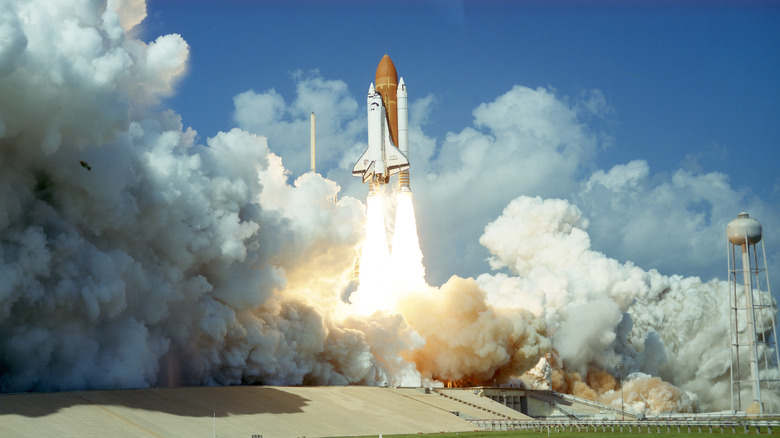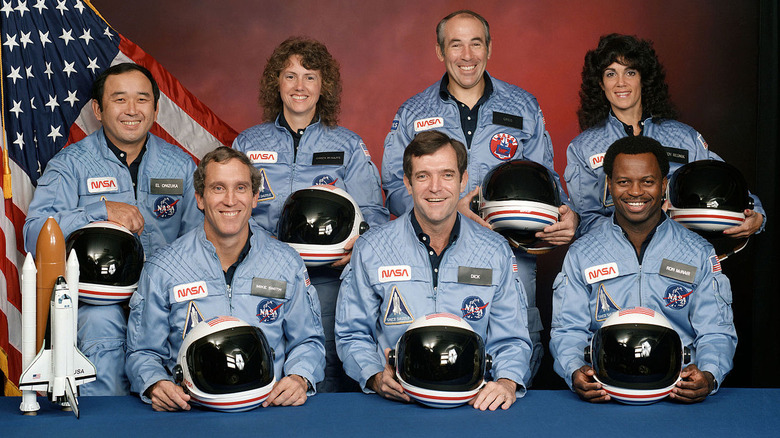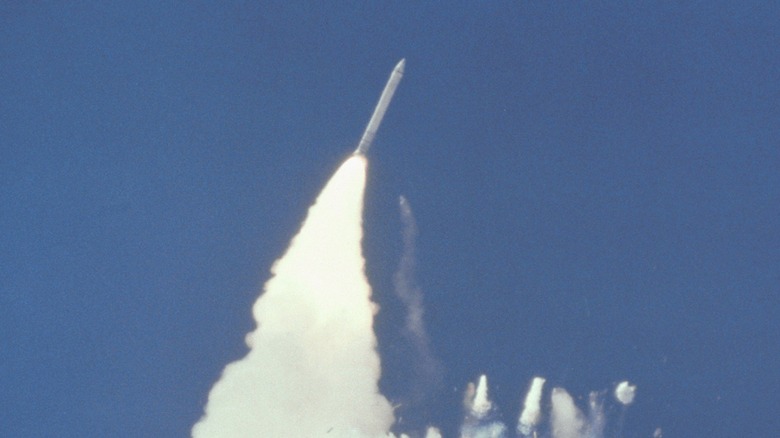How The Challenger Space Shuttle Explosion Could've Been Avoided
On January 28, 1986, the space shuttle Challenger lifted off from Cape Canaveral, Florida (via History). Seventy-three seconds later, the spacecraft was engulfed in flames. Seven astronauts were on board; none of them survived (via Biography). What was supposed to be a pivotal point in NASA history turned out to be a national tragedy as the footage of the disaster was replayed over and over again on live TV.
Most notably, one of the astronauts was Christa McAuliffe, a high school social studies teacher from New Hampshire who would be the first civilian to fly into space. McAuliffe had won the Teacher in Space Project, a contest launched by President Ronald Reagan. The idea was that if McAuliffe, an average American, could travel to space, so could anyone else. Tragically, McAuliffe and the other six passengers never made it to space. Instead, human error led to their preventable deaths.
Technically speaking, cold weather caused the disaster (via Spectrum Local News). A Presidential Commission was launched to determine what went wrong and found that there had been a leak. The source of the leak was from something called an O-ring. Sensitive to extreme temperatures, the O-ring would lose its elasticity if exposed to temperatures under 53 degrees. On the January morning of the launch, the temperature was 36 degrees.
Miscommunication and bad decisions led to the disaster
The Presidential Commission (known as the Rogers Commission) found that NASA and Morton Thiokol, the company that built rocket boosters, had brought up concerns about the O-rings, but somehow, the issue did not make it into flight-readiness documents, reports History.
Bob Ebeling was one of the engineers from Morton Thiokol who tried to stop the Challenger's launch outright (via NPR). He and other engineers worried that the cold overnight temperatures before the launch would cause the O-rings to malfunction. Regardless of the data presented, both NASA and Thiokol executives refused to postpone the launch. The morning of the launch, Ebeling went as far as telling his daughter that the Challenger would blow up and everyone would die.
After the cause of the disaster was found to be "a serious flaw in the decision-making process leading up to the launch." the question remained: Why did NASA push for the launch? It seems the answers have to do with both publicity and politics.
The Challenger had to launch on time
The ultimate end goal for the Challenger was for it to be used in space travel that would be eventually accessible to all (via History). Then there was McAuliffe, the schoolteacher-turned-astronaut who became an instant celebrity and brought plenty of excitement and public awareness to the launch.
She was scheduled to broadcast a lesson live from space. If they launched later than intended, the broadcast would be on the weekend, when most children aren't in school. President Reagan was also slated to give his State of the Union Address the day of the launch, which of course would be another big publicity win for both NASA and the president.
Ultimately, it was a culmination of all these factors that led the launch to be that fateful cold Tuesday January morning. If it would have been any other day that week, it's quite possible the disaster would not have occurred (via Spectrum Local News).
After the Challenger disaster, it would be more than two years before NASA launched another shuttle mission. Moreover, Ebeling, the engineer who tried to stop the Challenger launch, lived with the guilt of not being able to do more, until his death in 2016 (via NPR).


